
The flag of South Korea, also known as the Taegukgi and colloquially known as the flag of Korea, has three parts: a white rectangular background, a red and blue Taegeuk in its center, and four black trigrams, one in each corner. Flags similar to the current Taegeukgi were used as the national flag of Korea by the Joseon dynasty, the Korean Empire, and the Korean government-in-exile during Japanese rule. South Korea adopted the Taegukgi as its national flag when it gained independence from Japan on 15 August 1945.

The March 1st Movement, also known as the Sam-il (3-1) Movement, was a protest movement by Korean people and students calling for independence from Japan, and protesting forced assimilation into the Japanese way of life. Thirty-three Korean cultural and religious leaders issued a proclamation, supported by thousands of students and civilians in Seoul. There were over 1000 demonstrations in many other cities. They were brutally suppressed, with Korean historian Park Eun-sik reporting about 7,500 killed and 16,000 wounded, and 46,000 arrested. These were among the earliest public displays of Korean resistance during the rule of Korea by Japan from 1910 to 1945. The event occurred on March 1, 1919, hence the movement's name, literally meaning "Three-One Movement" or "March First Movement" in Korean. It is also sometimes referred to as the Man-se Demonstrations.

The Korean independence movement was a military and diplomatic campaign to achieve the independence of Korea from Japan. After the Japanese annexation of Korea in 1910, Korea's domestic resistance peaked in the March 1st Movement of 1919, which was crushed and sent Korean leaders to flee into China. In China, Korean independence activists built ties with the National Government of the Republic of China which supported the Provisional Government of the Republic of Korea (KPG), as a government in exile. At the same time, the Korean Liberation Army, which operated under the Chinese National Military Council and then the KPG, led attacks against Japan.

The Korean Provisional Government (KPG), formally the Provisional Government of the Republic of Korea, was a partially recognized Korean government-in-exile based in Shanghai, China, and later in Chongqing, during the period of Japanese colonial rule in Korea.

The People's Republic of Korea (PRK) was a short-lived provisional government that was organized at the time of the surrender of the Empire of Japan at the end of World War II. It was proclaimed on 6 September 1945, as Korea was being divided into two occupation zones, with the Soviet Union occupying the north, and the United States occupying the south. Based on a network of people's committees, it presented a program of radical social change.
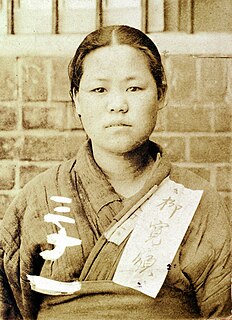
Yu Gwan-sun was a Korean independence activist organizer in what would come to be known as the March First Independence Movement against Imperial Japanese colonial rule of Korea in South Chungcheong. The movement was a peaceful demonstration by the Korean people against Japanese rule. Yu became one of the most famous figures in this movement and later a symbol of Korea's fight for independence.

Kim Chwa-jin or Kim Jwa-jin, sometimes called by his pen name Baegya, was a Korean general, independence activist, and anarchist who played an important role in the early attempts at development of anarchism in Korea.

Yun Dong-ju or Yoon Dong-ju was a Korean poet born in Longing, Jilin, China, who was known for his lyric poetries as well as the resistance poetries against the Japanese colonialism during Japan's occupation of Korea, longing for Korea's liberation.

Kang Ji-hwan is a South Korean actor. He began his career in musical theatre, and has since starred in television dramas such as Be Strong, Geum-soon! (2005), Capital Scandal (2007), Hong Gil-dong (2008), Lie to Me (2011), Incarnation of Money (2013), Big Man (2014) and Children of a Lesser God (2018) as well as the films Rough Cut (2008) and My Girlfriend Is an Agent (2009).
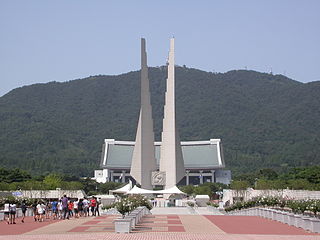
The Independence Hall of Korea is a Korean history museum in Cheonan, South Korea. Opened on August 15, 1987, it has the largest exhibition facility in South Korea, with a total floor area of 23,424 m². The museum focuses on the independence movements of the Japanese colonial period; however, the first exhibition hall, The Hall of National Heritage, is dedicated to the period ranging from prehistoric times to the Joseon Dynasty. It has seven indoor exhibition halls and a Circle Vision Theater.
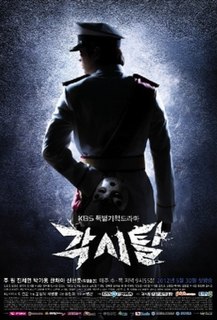
Bridal Mask is a 2012 KBS2 period drama based on the popular Korean manhwa by Huh Young-man. Set in Seoul, Korea, during the 1930s Japanese colonial era, the story follows a man named Lee Kang-to, a Korean police officer commissioned by the Japanese Police to betray his own country and aid the Japanese in the annihilation of the Korean rebellion. It stars Joo Won, Jin Se-yeon and Shin Hyun-joon.
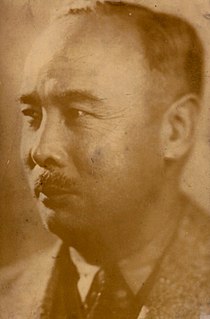
Lyuh Woon-hyung or Yo Un-hyung was a Korean politician who argued that Korean independence was essential to world peace, and a reunification activist who struggled for the independent reunification of Korea following its national division in 1945.

Mun Il-yeong (Hangeul: 문일평, Hanja: 文一平, Pen name: Ho Am was a historian of the late Korean Joseon Dynasty, and an activist in the Korean independence movement during the period of Japanese rule. His research of Korean history in relation to government, culture, diplomacy, and education, helped to inspire nationalism and a deeper love of history in the Korean people.

The Taegeukgi rallies, also known as the Pro-Park rallies, are ongoing rallies that initially started as a series of counter-candlelight rallies supporting the former president of South Korea Park Geun-hye in 2016 but now continuing with the aim of releasing Park. The Taegeukgi protestors or the Taegeukgi crowds got their names because they vehemently swung or wore South Korean flags during rallies.
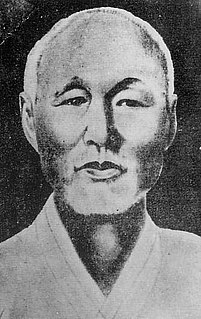
Kang Woo Kyu was a doctor of Korean medicine and a fighter for Korean independence during the Japanese colonial period. In 1919, Kang tried to assassinate Saitō Makoto, who was serving as the Governor-General of Korea, but failed.

The March 1st Independence Movement Road in Daegu is located in Dosan-dong, Jung-gu, Daegu of the Gyeongsang Province in South Korea. On March 8, 1919, students from various high schools in the area secretly assembled and rallied down this alleyway — at the time a pine forest — and its 90-step stairs during the March 1st Independence Movement. The road is located near many other historical sites relevant to the March 1st Independence Movement and overarching independence struggle, including the new building of the Daegu First Presbyterian Church, the homes of the Christian missionaries from the U.S., and the home of Seo Sang-don, the leader of the National Debt Repayment Movement, which aimed to gain back Korean autonomy. Today, pictures from the March 1st Independence Movement and taegukgis decorate the walls all along the road, and it is included in many Daegu tourist courses due to the road's significance.

The June 3 resistance movement, also known as 6.3 resistance or the movement against the Korea-Japan negotiations was initiated in June 1964 by students and citizens against the Park Chung-hee administration effort to negotiate the normalization of South Korea and Japan diplomatic relations.
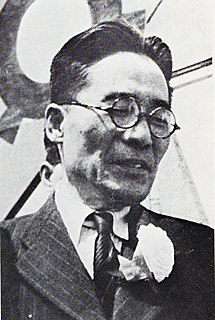
Ho Hon was a Korean independence activist in Japanese controlled Korea and politician in the early years of the Democratic People's Republic of Korea. As a lawyer, he defended independence activists along with Lee In and Kim Byong-ro. In September 1948, following the official proclamation on the establishment of the Democratic People's Republic of Korea in the northern part of the Korean peninsula, he was elected a delegate to the first convocation of the Supreme People's Assembly, the unicameral parliament of North Korea. He also served President of Kim Il-sung University. While working as a reunification activist, he drowned in the Chongchon River in August 1951. He was also the father of Ho Jong-suk, a female activist and a politician in North Korea.
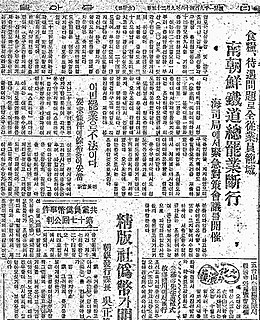
The September 1946 Korean general strike was a nationwide strike led by the Communist Party of Korea in which more than 250,000 workers participated. It was fuelled by a growing independence movement after the imposition of the United States Army Military Government in Korea (USAMGIK). Although the strike's events were studied by the South Korean Truth and Reconciliation Commission from 2005 to 2010, they remain disputed.

Toji, the Land is a 2004 South Korean television series based on the novel Toji ( 토지) written by Park Kyong-ni. The series following the story of turbulent life of Choi Seo-hee as she lives throughout the Donghak Peasant Revolution, the Eulmi Incident, the Japanese colonial era, and Korea's independence in 1945. As in the novel, the drama portrays the conflicts between individuals who are engulfed in their own desires of love and veiled enmity, rage and jealousy. Starring Kim Hyun-joo, Yoo Jun-sang, it premiered on SBS on November 26, 2004, and aired on Friday and Saturday at time-slot 20:45-21:45 (KST) till May 22, 2005.



















